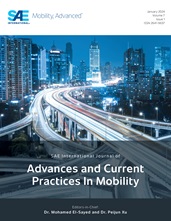Automotive manufacturers relentlessly explore engine technology combinations to achieve reduced fuel consumption under continued regulatory, societal and economic pressures. For example, technologies enabling advanced combustion modes, increased expansion to effective compression ratio and reduced parasitics continue to be developed and integrated within conventional and hybrid propulsion strategies across the industry. A high-efficiency gasoline engine capable for use in conventional or hybrid electric vehicle platforms is highly desirable. This paper is the second of two papers describing the multi-cylinder integration of a technology package combining lean-stratified combustion with Miller cycle for downsized boosted applications. The first paper describes the design, analysis and single-cylinder testing conducted to down-select the combustion system deployed to the multi-cylinder engine. This paper defines a light-duty engine package capable of achieving a 35% fuel economy improvement at US Tier 3 emission standards over a naturally aspirated stoichiometric baseline vehicle. A multi-mode combustion system was developed enabling highly efficient lean-stratified operation at light-load and stoichiometric Miller-cycle operation at mid- to high-loads. A central direct-injection four-valve layout was designed with high-tumble ports and a bowl-in-piston capable of stable operation under highly dilute mixtures when properly matched to fuel spray characteristics, injection strategy, and a high-energy ignition system. Boost system layout and base engine architecture were selected to minimize parasitics and maximize aftertreatment effectiveness. A multi-cylinder engine was developed and calibrated over a steady-state map. Results fed vehicle simulations over the EPA city and highway test cycles to predict the fuel economy improvement and tailpipe emissions potential. Fuel economy improvements over the baseline vehicle were projected at 42% and 39% for active-urea and passive-ammonia SCR aftertreatment systems respectively. Controls complexity to achieve regulatory compliance and the cost of the lean aftertreatment system were identified as the primary challenges to commercial viability.
